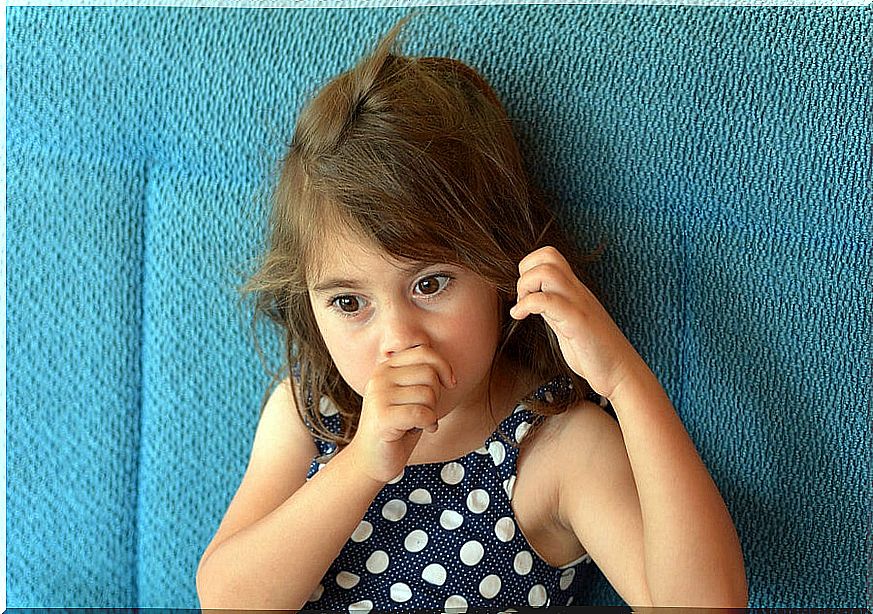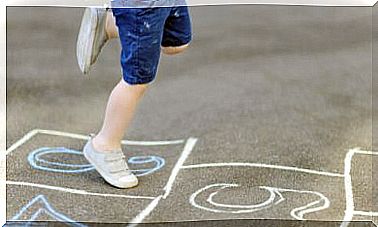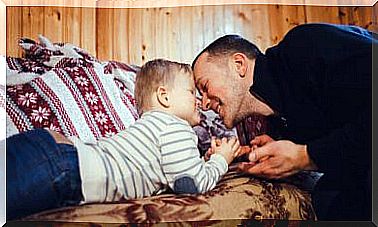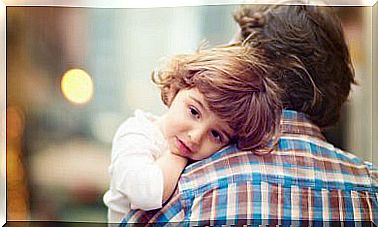Manias And Tics In Children

They twist their hair, bite their nails, suck their fingers, or touch their nose; These are some of the hobbies and tics in children that turn many parents upside down. Can they be avoided? Do they cause any harm and how do you help them? They are the most common unknowns that arise after observing these repetitive behaviors in their little ones.
Manias, known as mood disorders, manifest themselves in various ways. They can be temporary, obsessive or can even turn into a bipolar disorder or a manic state when they present more serious variations. They usually develop from the need to release emotions, anxiety or frustration.
These behaviors are externalized in children between the ages of 3 and 5. They tend to disappear with maturity but, in some cases, this does not happen. On the contrary, they become entrenched and interfere with the development of the infant.
Manias and tics in children
Manias are habits that are acquired unconsciously, arise repeatedly and without control. They become established over time and, in many cases, it is difficult to eradicate them, since the child uses them to feel comfortable at some point or not to get bored in certain situations.
This habit occurs when there is irritability, anxiety, fatigue or great states of tension or stress. They can cause bodily injuries such as dental malformations from sucking a finger or deforming the nails from biting them so much. They also become a source of ridicule and consequently affect social relationships, especially during school age.
To help eradicate this habit, it is best to teach the little one to face his fears by giving him security and self-confidence. The important thing is not to make him feel different, so that he does not have another cause for concern, and to make it clear that he has parental support to overcome any difficulties.

How to help overcome manias and tics in children?
One of the activities that is most recommended in these cases is for the child to learn relaxation techniques and infant breathing. With them, it is likely that he himself will discover what is causing the mania or tic.
By detecting its origin in time, it will be possible to work on it and thus reduce this repetitive behavior. The usual thing is that it disappears over the years, but if this does not happen, it is advisable to go to a specialist.
Another effective alternative to help reduce those repetitive urges is distraction through play. For example, if the little one sucks his finger a lot or bites his nails, a playful activity can be implemented that requires having his hands full at all times. This will prevent you from putting them in your mouth.
On the other hand, physical exercise is the best alternative to reduce stress. Riding a bike or swimming will help them clear their minds and create a new routine in their lives. There will be no room for frustration as, by being active, you will not have negative thoughts that can lead to anxiety.
Types of tics
Tics are almost uncontrollable repeated movements or sounds, which have no conscious purpose and are often undisciplined. These compulsive gestures appear in situations of great stress or before something new, which causes concern in the child. There are four types:
- Simple motors : They are the most common, such as blinking or winking of the eyes, shaking the head and movement of the shoulders, arms or legs. They are generally transitory and last from 1 to 12 months.
- Complex motors : These are slow, coordinated movements that involve more than one group of muscles. Such is the case with hitting yourself, jumping or stomping, squatting, or spinning repeatedly.

- Simple vowels: They also occur frequently and include actions such as throat clearing, nose sniffing, snorting, or grunting.
- Complex vowels: They are those that appear when the child repeats the words that other people say (echolalia), says the same words over and over again (alilalia), and when he utters obscene words (coprolalia). They are chronic tics that last more than a year.
Origin and treatment of tics
This repetitive behavior is characteristic of shy, quiet, isolated and very sensitive children, since it helps them manage anxiety without noticing it and, by doing so unconsciously, it is more difficult to control. Even trying to correct them can cause you more anxiety and embarrassment for not being able to counter them.
If we notice that one of our children has a tic or a mania, the priority is to prevent these involuntary contractions from becoming a disease. To do this, we must focus on strengthening their confidence and neutralizing adverse behaviors, closely monitor their evolution and, if at any time we notice that there is no progress, visit a specialist in the area as soon as possible.










